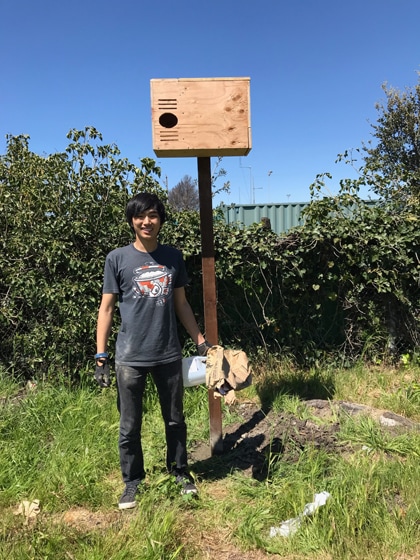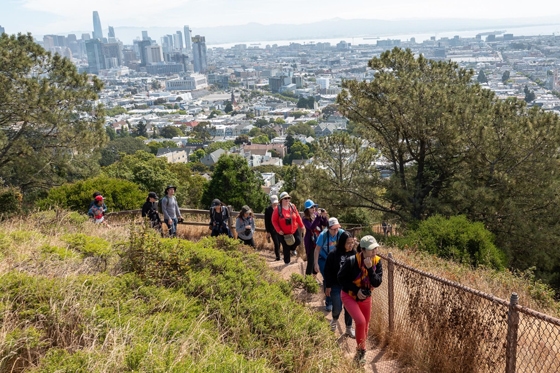-
Of the dozen times I have seen gray fox, this was the first time I ever heard them make a sound. I now know that not only do gray fox growl, they yap, bark, and make a screaming sound that carries a long distance.
-
Shakespeare’s Birds Walk & Talk
By Mary Ann Koory
In 2010, Linda Swanson, I, and friends attended a thrilling CalShakes production of Macbeth in Orinda. As we took our seats, twilight filling the bowl of the Bruns Amphitheater, Linda said, “Did you hear that?” As a non-birder I am used to Linda noticing the presence of birds no matter where we are. Perhaps your friends have remarked on the same thing about you. It’s as if there is another world co-existing with our ordinary, urban world, one that we non-birders are only intermittently aware. I looked up from setting out cheese and crackers and listened. A Great Horned Owl hooted.
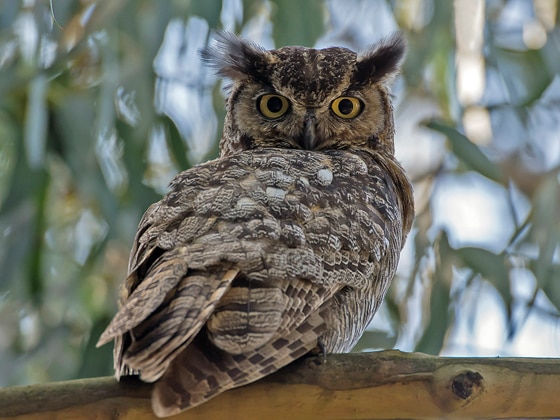 Great Horned Owl by Doug Mosher
Great Horned Owl by Doug Mosher
In about 15 minutes, Lady Macbeth would pace across the stage, waiting for her husband to say that he had stabbed King Duncan. As she waits, she hears a noise – but it’s not Macbeth. “Hark! Peace!/It was the owl that shriek’d, the fatal bellman . . .” (2.2.3-4) she says to herself. The sound of the owl reminds Lady Macbeth of the bell that rang in Renaissance towns to announce a death. She, waiting for news of a murder that violates social connections, hears the owl calling like the bell that signals a community to pause and mourn the loss of a neighbor.
Most of us have no idea what a “fatal bellman” is without a footnote. Over 400 years separate us from Shakespeare, the customs of rural England, and the commercial theaters of London. But when the actress spoke Shakespeare’s words, her voice, the sounds of a Great Horned Owl in the 21st-century Orinda twilight, the play-acted owl outside a castle in medieval Scotland, the “shriek” described by a 16th-century playwright for his rowdy city audiences, and the solemn tone of a church bell in Renaissance England all resonated together in the same moment.
Linda and I, both English teachers, were enchanted by the way the imaginary and the real owl connected us to Shakespeare and our world to Shakespeare’s natural world. Since then, Lesley and Bob Currier at Marin Shakespeare Company in San Rafael have given us the opportunity to explore connections between the metaphorical birds that appear in Shakespeare’s plays and the literal birds that appear here in California where his plays are performed. Since 2013, Linda has led a bird walk through the lovely Dominican University campus where Marin Shakespeare’s Forest Meadows Amphitheater is located, afterwards I, over dinner in the Amphitheater, talk about the birds that will appear in the Shakespeare production that follows.…
-
Barn Owl Boxes in Bay Area Parks
By Max Lee
For my Eagle Scout project, I built twelve nest boxes for Barn Owls. These boxes (designed by Steve Simmons) are made to have draining holes at the bottom to prevent flooding, top and side hinges to make the boxes easy to open and clean, and a specially sized entrance hole to prevent Barn Owl predators from entering the box.
By installing these boxes in appropriate areas, I will help support the local Barn Owl population by providing the owls with homes safe from predators, while also controlling the rodent population. The Barn Owls will hunt and kill rats at a higher rate due to their increased numbers. The owls ensure there will be less rodents in the area, which will help the overall community, as rats are known to infest homes and buildings, causing damage to infrastructure, stealing food, and spreading diseases.
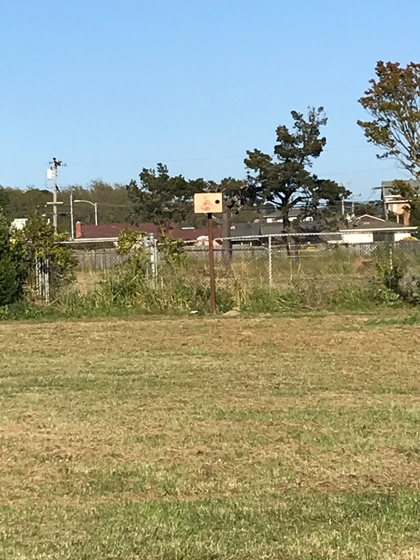
While I greatly enjoyed the project there were a few setbacks, most of which were minor if not comically trivial. I did have a very hard time finding an appropriate and approved location to install the nest boxes. The site had to have an open field for the Barn Owls to hunt in and also needed trees surrounding the area. The first site we looked at was in Point Molate, but later that site was rejected because it had hazardous conditions and a development was being planned. A site in Albany was approved but did not have a grassy field. Also, the sites needed to be away from freeway entrances and trains which could be a danger to the owls.
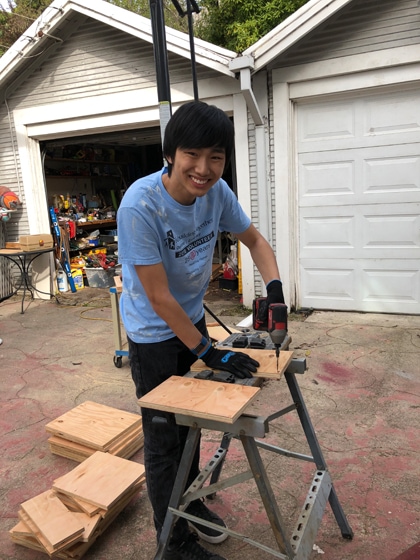
While searching for an appropriate site, I built a prototype box with Phil Chin, my troop member’s father, and continued to look for places to put the nest boxes after the Point Molate site was rejected.
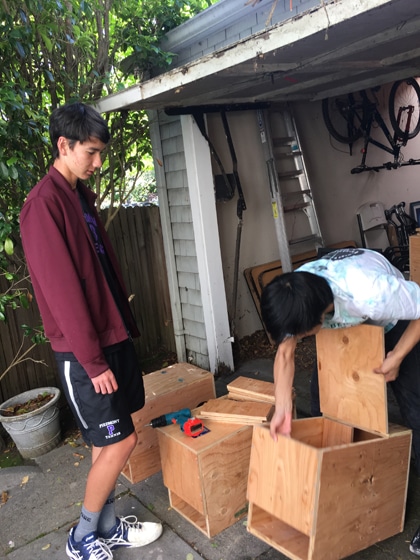
Several sites were approved, including Golden Gate Park (San Francisco), Anthony Chabot Regional Park Skyline Ranch Equestrian Center (Oakland), and JFK Park, Booker T. Anderson Park, Hilltop Green, and Hilltop Park (all in Richmond). I scouted the Richmond sites with Mark Maltagliati and Chris Womack was the contact for Golden Gate Park. I did not scout Anthony Chabot Regional Skyline Ranch Equestrian Center with Judie Martin because she had already picked out a location in a barn.
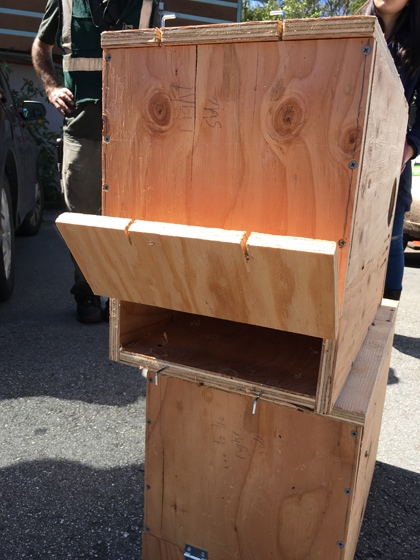
I separated the building of the boxes into two phases. The majority of the work was done with my Eagle Project Coach, Mr.…
-
How Birdwatching Helped Ease My Anxiety
By Emily Busse
Editor’s Note: This blog originally appeared in The Bold Italic and can be found here.
What I thought was a “grandmas-only” hobby has done more for my Sunday Scaries than anything else.
An old frenemy came back into my life this past year: anxiety disorder. I finally admitted to myself that this particular flare-up wasn’t going to just go away when my dentist said my gums were receding “due to stress-induced grinding.” If your dentist can guess your mental health, it’s time to get proactive.
I started looking for an in-network therapist (still working on that one five months later), and in the meantime, tried a slew of other self-treatments. I upped my workouts, paid $8 a month for a meditation app, and pulled out the adult coloring book I spent way too much on and never used. But the activity that’s done more for my worst weekend dread than anything else was something I never saw coming: birdwatching.
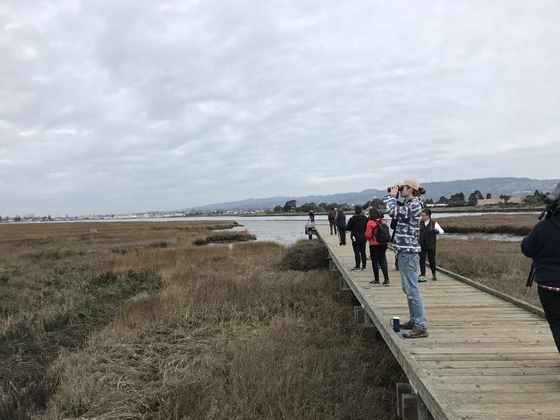 Photo by the author.
Photo by the author.
Birdwatching (or “birding” if you’re cool) is about observing birds in the wild. It started for me three months ago when my dad and stepmom gave me a pair of binoculars for my 28th birthday. They knew I liked hiking and camping, and figured I’d enjoy learning more about the wildlife around me. The first thing I did was watch a neighbor four houses away eat a banana through their kitchen window.
The second thing I did was find the National Audubon Society Field Guide to North American Birds: Western Region my parents gifted me two years before (they clearly had a vision for me). I hadn’t used the book yet, in part because I associated birdwatching only with my grandparents who had binoculars and a guidebook handy by the back porch. Or with my dad, who will spend 45 minutes Googling facts about an Anna’s Hummingbird after seeing one from the window. But now that my own birding tools were staring at me from my dresser, I thought I should at least give it a try. Maybe Grandpa was onto something.
The following weekend I schlepped up to Tilden Regional Park and gave it my first go. I didn’t see many birds, and I felt a little creepy using binoculars within view of a playground. But once I got far enough from other people and tweaked the binoculars just right, a whole new world opened up.…
-
GGBA teams up with the Feminist Bird Club at Land’s End
By Alex Smolyanskaya
“Why feminist?” is a question I’ve been getting a lot lately. I’ll answer by starting at the beginning. The Feminist Bird Club has its origins in New York City, where Molly Adams founded the club in 2016 in response to a violent crime near Jamaica Bay Wildlife Refuge, where she often birded alone, and as a do-something reaction to the new political climate. The group has been birding together and fundraising together ever since. Proceeds from the highly-coveted patch go toward social justice causes such as Planned Parenthood and Black Lives Matter.
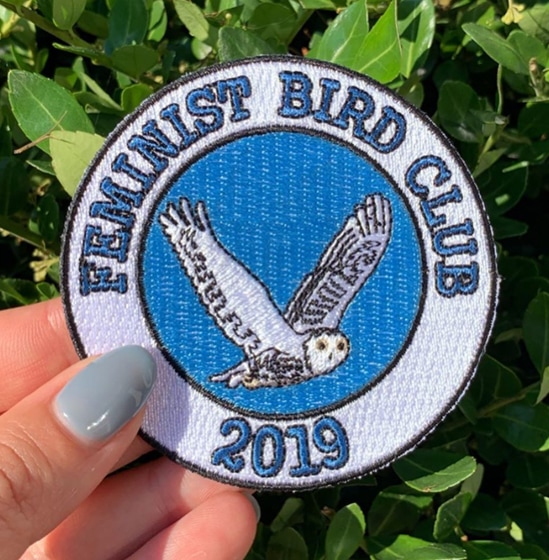 The 2019 Feminist Bird Club Patch. $6,500 in proceeds were donated on July 4th to Pueblo Sin Fronteras and the Native Youth Sexual Health Network.
The 2019 Feminist Bird Club Patch. $6,500 in proceeds were donated on July 4th to Pueblo Sin Fronteras and the Native Youth Sexual Health Network.
The equity-driven mission, inclusive birding community, and activism attracts a young audience, largely of beginners, many of whom identify as members of marginalized groups. In the “Birds of North America” video series, brothers Jason and Jeffrey Ward, who are black, marvel at how “rare [it is] to find someone who shares the same beliefs and hobbies at the same time”. The New York Times wrote about FBC in its Style section. New chapters began to spring up from Boston to Seattle, even reaching the Netherlands.
When I was pondering where I would lead my first bird walk, a requirement for the Master Birder class in which I’m currently enrolled, I thought first about the Feminist Bird Club. I knew I wanted to do what FBC chapters were doing: appeal to a broad urban audience and go to a place easily accessible by public transit, nudge the start time a bit later in the day, and advertise among urban outdoorsy groups. I floated the idea of starting a Bay Area chapter to Molly, birder friends, and people I had never met. The response was overwhelming. People wanted community, they wanted to be activists, and most of all they wanted to be outside appreciating birds.
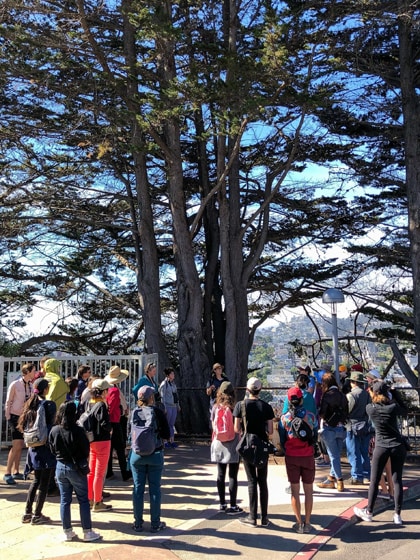 Participants in the San Francisco Bay Chapter’s Pride Bird Walk gather in front of the day’s leader, Sarah Burton.
Participants in the San Francisco Bay Chapter’s Pride Bird Walk gather in front of the day’s leader, Sarah Burton.
Four of those like-minded birders joined me to launch the Bay Area chapter of the Feminist Bird Club. Our inaugural walk was held at Corona Heights Park during SF Pride Weekend, from 9 am to 11 am; late enough to sleep off Friday night, early enough to take off in time for the Dyke March. Almost forty people came to bird, learn about each other, and spark a new community.…
Our Mission
To inspire people to protect Bay Area birds and our shared natural environment.
Our Vision
A world where birds, wildlife, and all people flourish together.
The Golden Gate Bird Alliance is a not-for-profit 501(c)(3) organization. Our federal tax ID number is 94-6086896
Contact Us
Golden Gate Bird Alliance
2150 Allston Way Suite 210
Berkeley, California 94704
JOIN OUR EMAIL LIST
Sign up to receive our eGull newsletter and get updates on other Golden Gate Bird Alliance news and opportunities!


